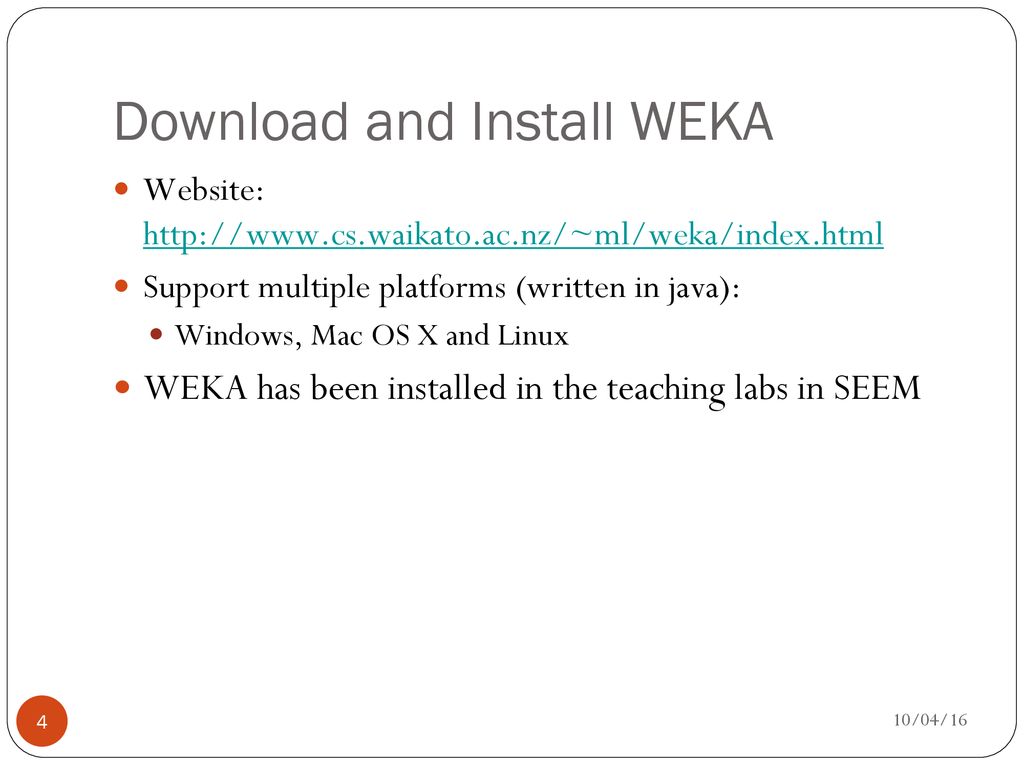
It took the complete attribute set and then it tried removing all of the 9 attributes, one by one. Back on the slide, you can count these subsets. And here it tells me that it's evaluated 36 subsets. A good question is: how many subsets we had to evaluate? How many attributes we had to evaluate? How much experimentation we had to do? So, I'm going to go back here, and I'm going to set the searchTermination to 1-and again I will explain that in a minute-and run it again. But anyway, we did get the same results here in this situation.
HOW TO INSTALL WEKA WRAPER GENERATOR
It is a little bit of a coincidence that we got the same results, because Weka doesn't do exactly the same thing, you know, the setting of the random number generator and so on. Same subset, and the "merit" is the same as the accuracy. Going back to the slide here, that's really the same kind of thing as we got before. And, lo and behold, it's got the same attribute subset as you got before, and it's got a "Merit of best subset" of 74%. Now it's running, doing all those cross-validations. And we're going to have a search termination.

We're going to use the BestFirst search, but we're going to search backwards-I'll talk about that later on. I'm going to select a threshold of -1: I'll explain that later on. I'm going to use 10-fold cross-validation, which actually is what you did-although in Class 1 of Data Mining with Weka you'd never heard of cross-validation. We're going to wrap up J48, which is exactly what you did back then all those weeks ago. We're talking here about the wrapper method of attribute selection, and that involves wrapping up a classifier. I'm going to go to the Select Attributes panel. We're going to go to Weka, and I've opened the glass data set-there it is: 214 instances. Well, of course there's a better way, and that's what the Select Attributes panel does.
HOW TO INSTALL WEKA WRAPER MANUAL
D'you remember way back in Data Mining with Weka, in the first class, you looked at glass.arff, you ran J48, you removed some attributes and-much to your surprise-you sometimes got better results with fewer attributes? Well, that was a laborious manual process, where you started with all the full attribute set and removed the best attribute by selectively trying all possibilities then you carried on doing that.

In this lesson we are going to talk about attribute selection using the wrapper method.

Then we're going to talk about cost sensitive evaluation and classification in the last two. We're going to talk about attribute selection in the first four lessons of this class. Hello again! Welcome to Class 4 of More Data Mining with Weka.


 0 kommentar(er)
0 kommentar(er)
